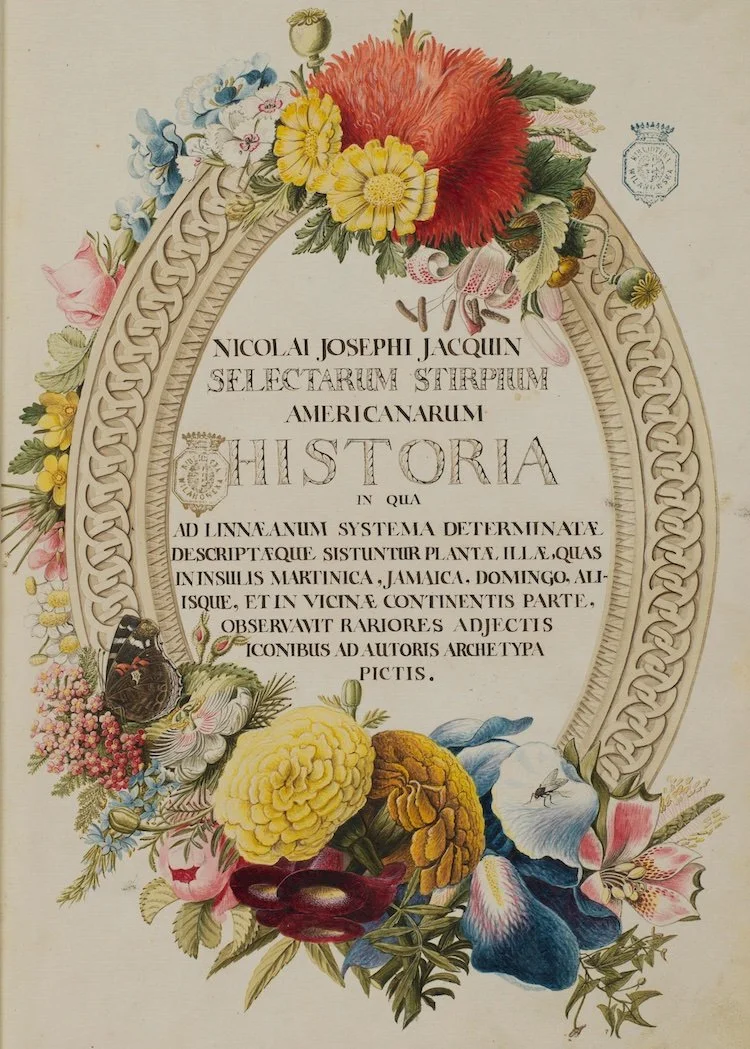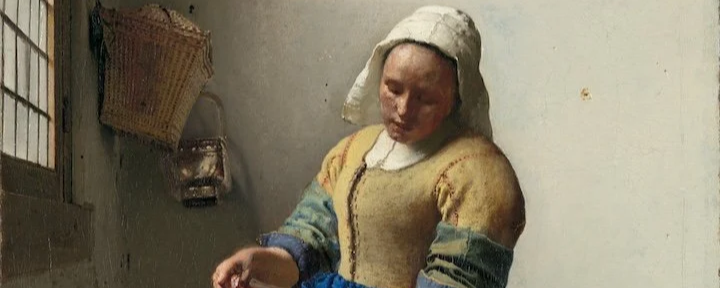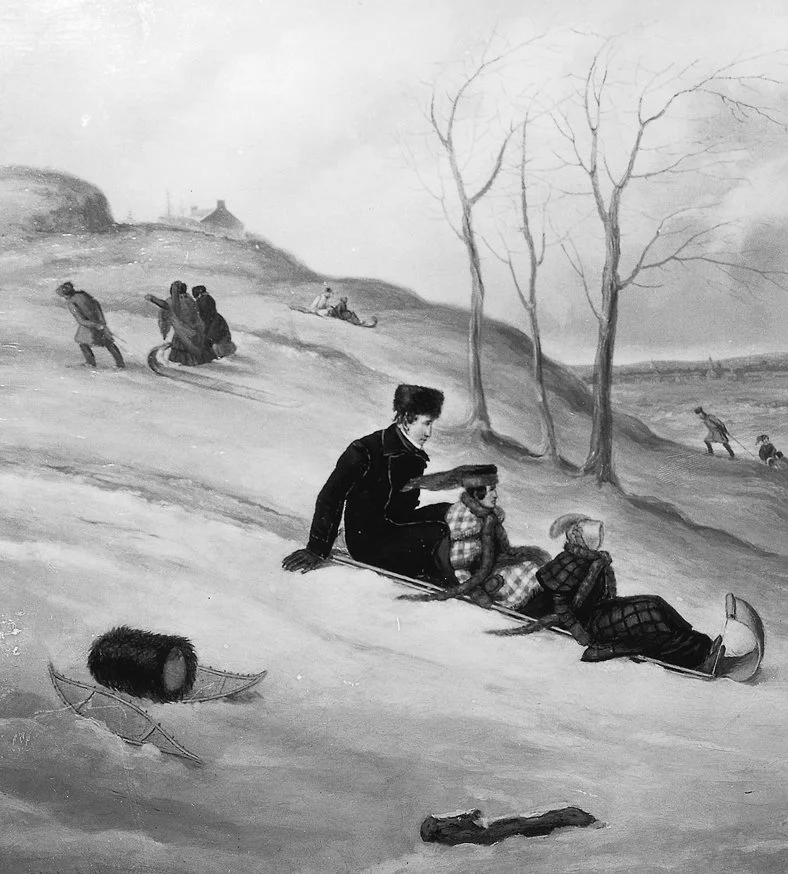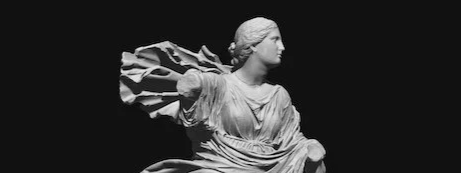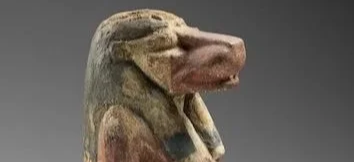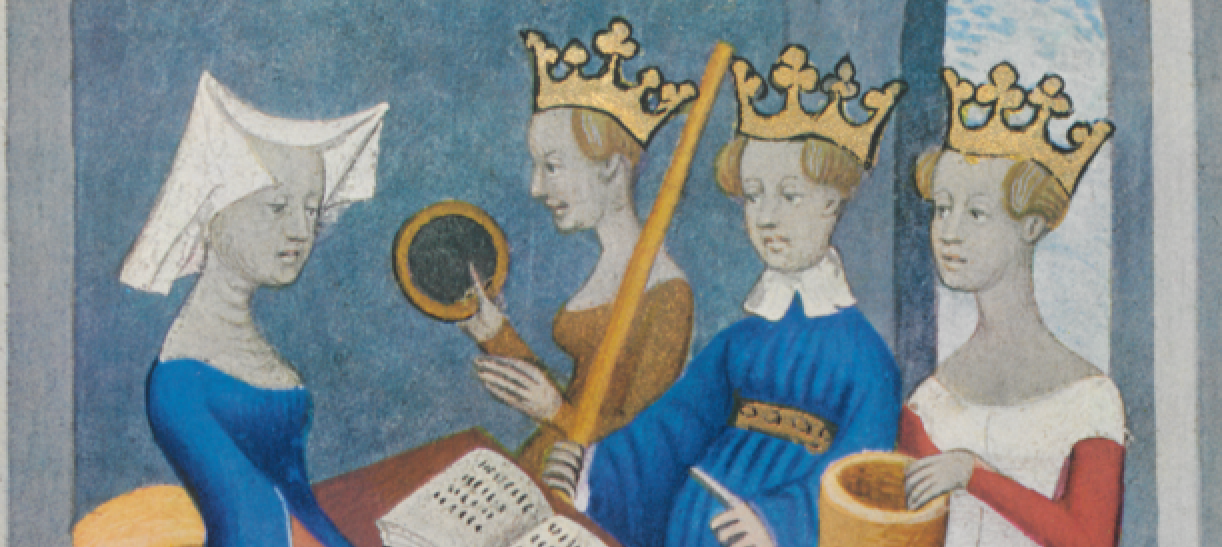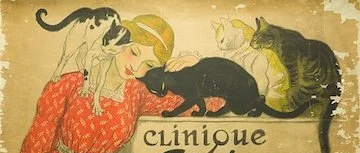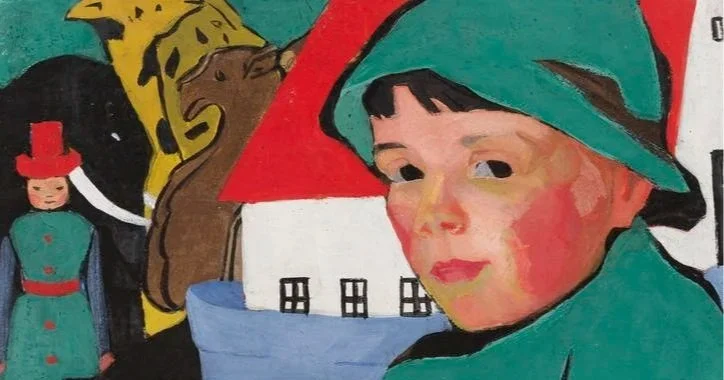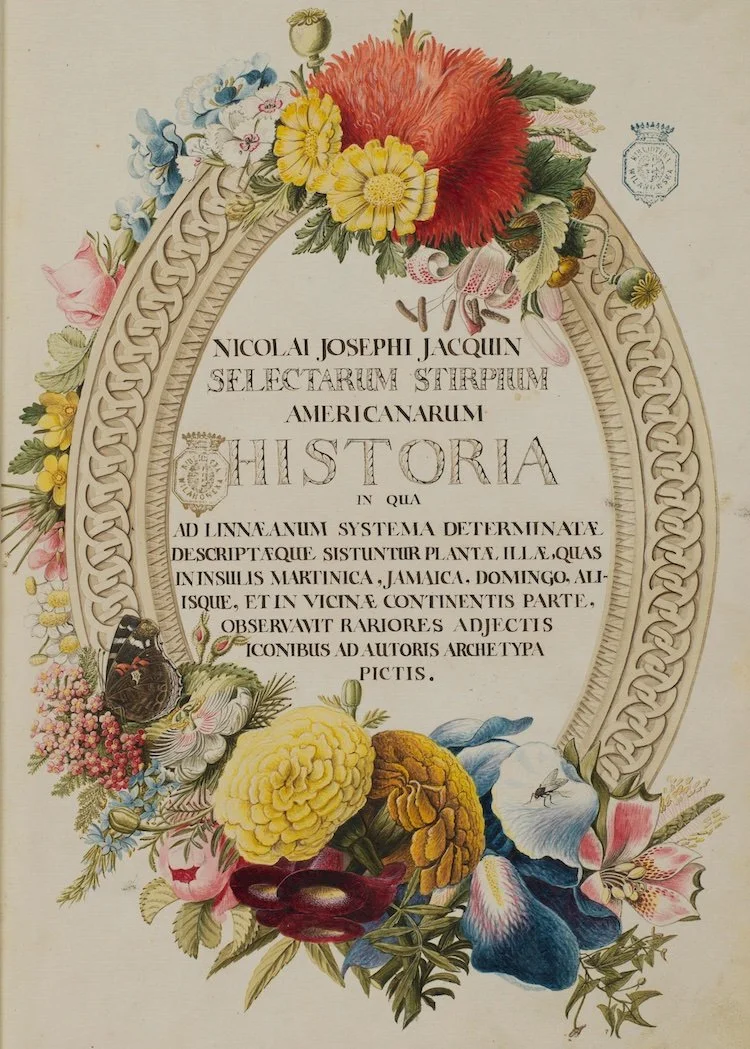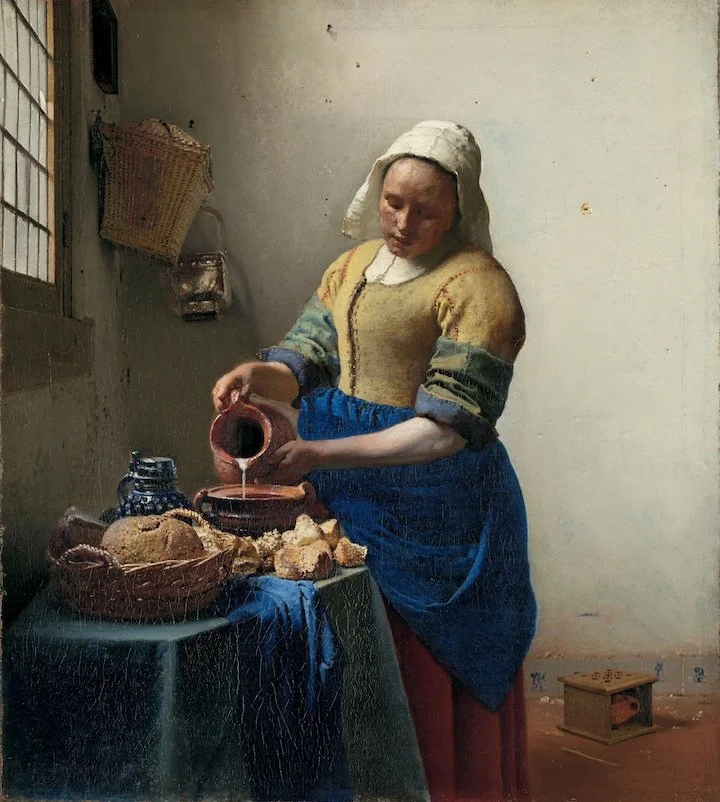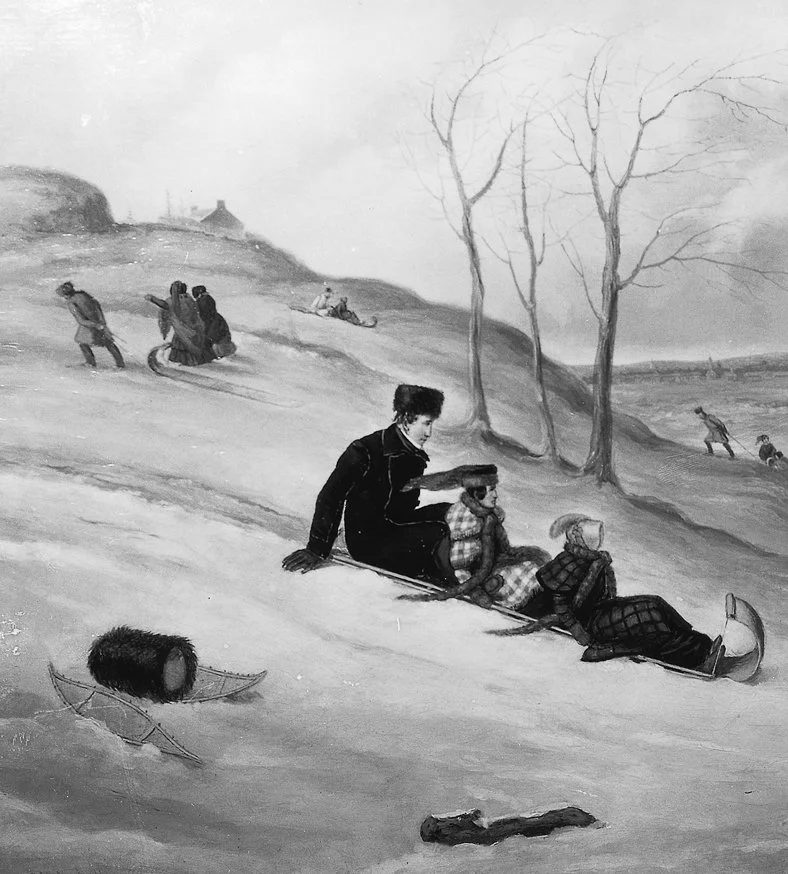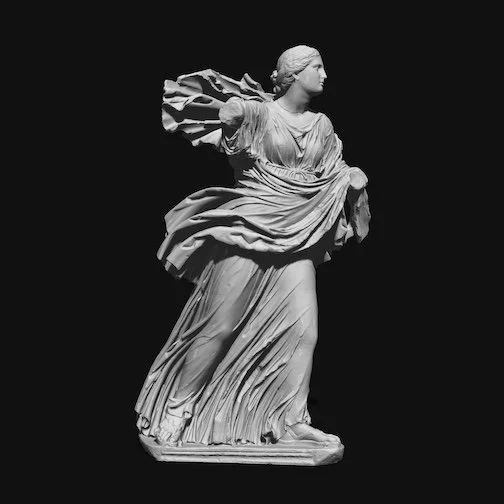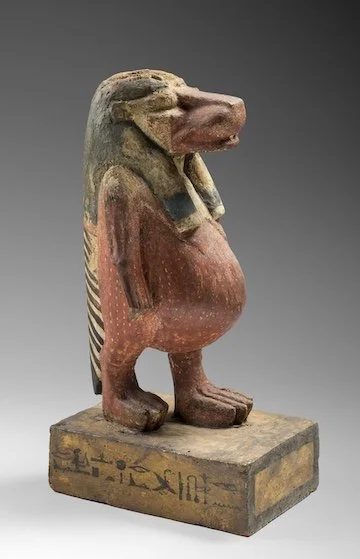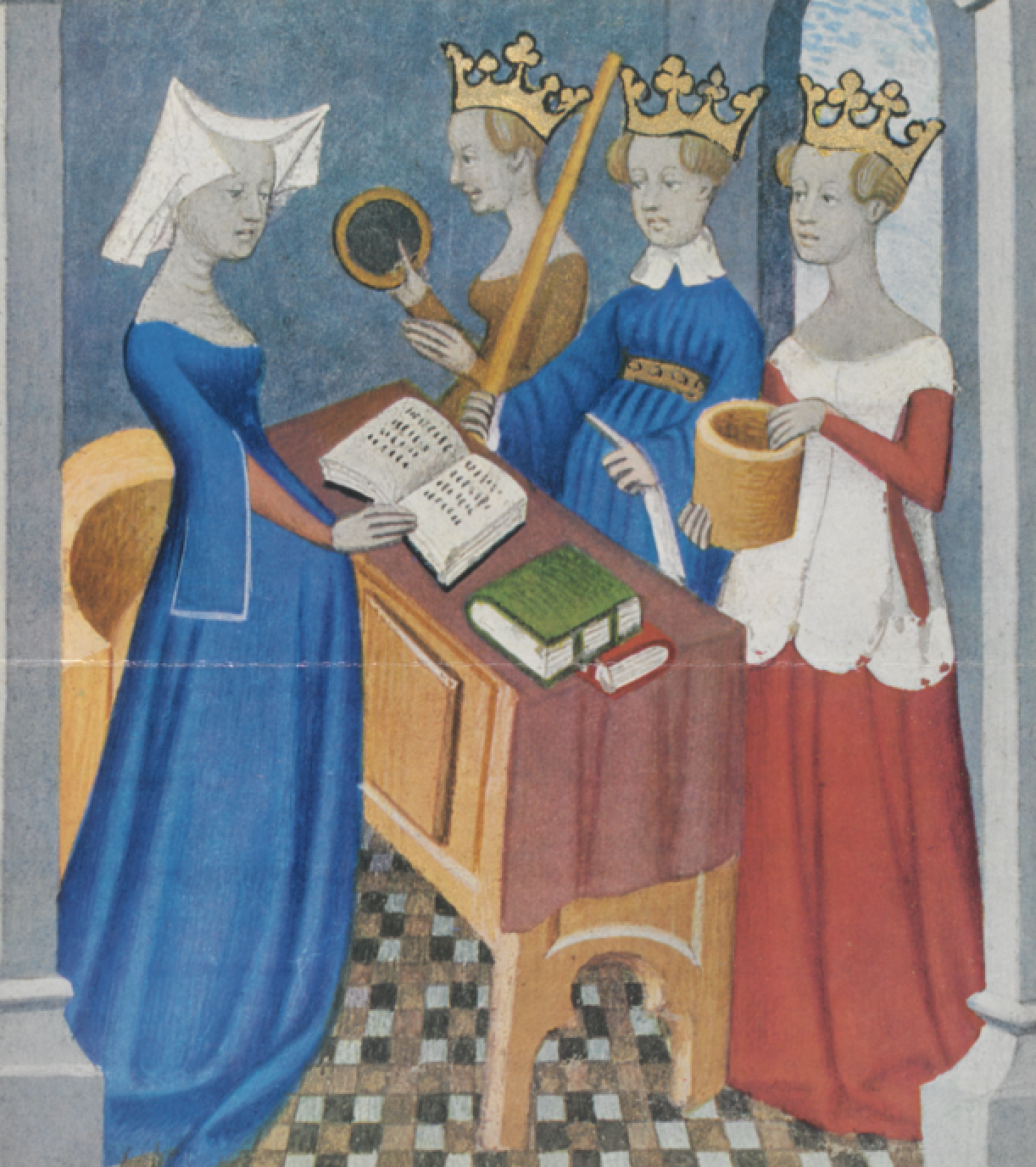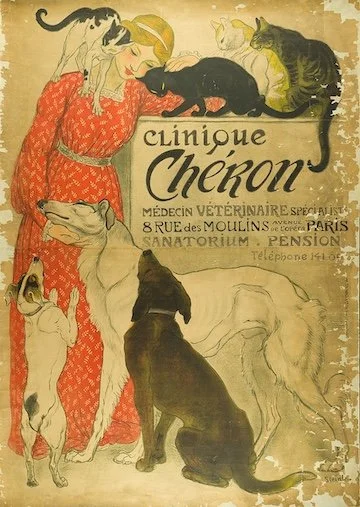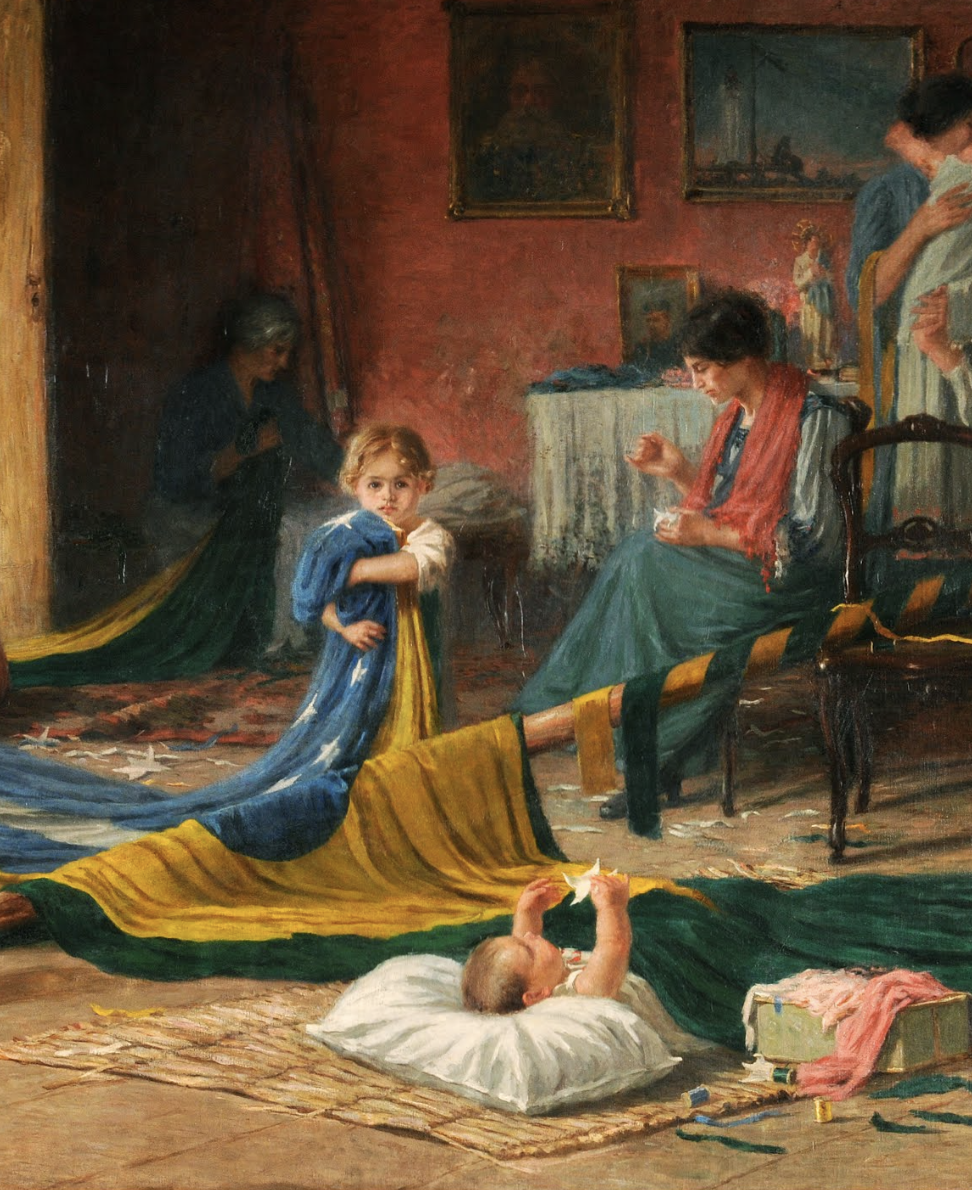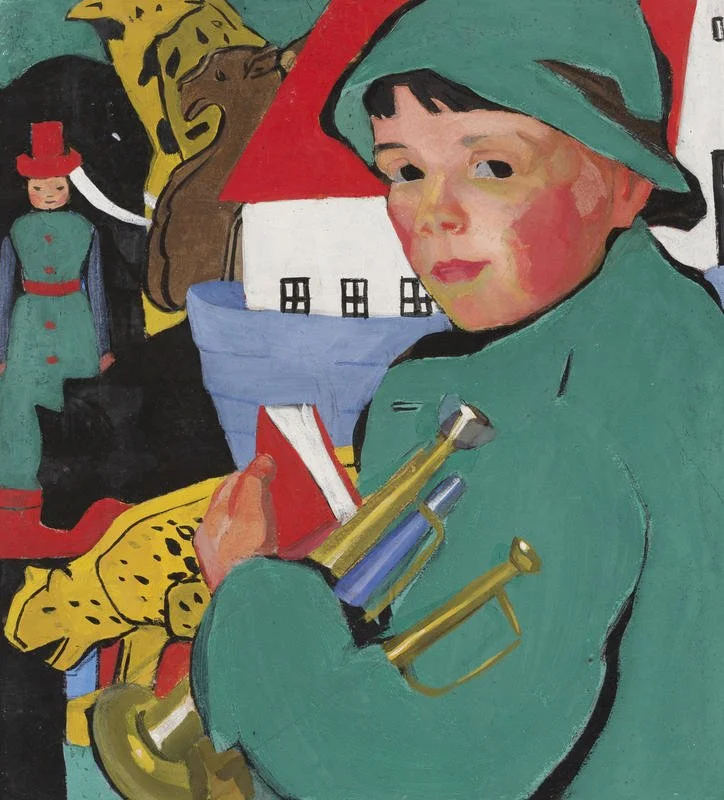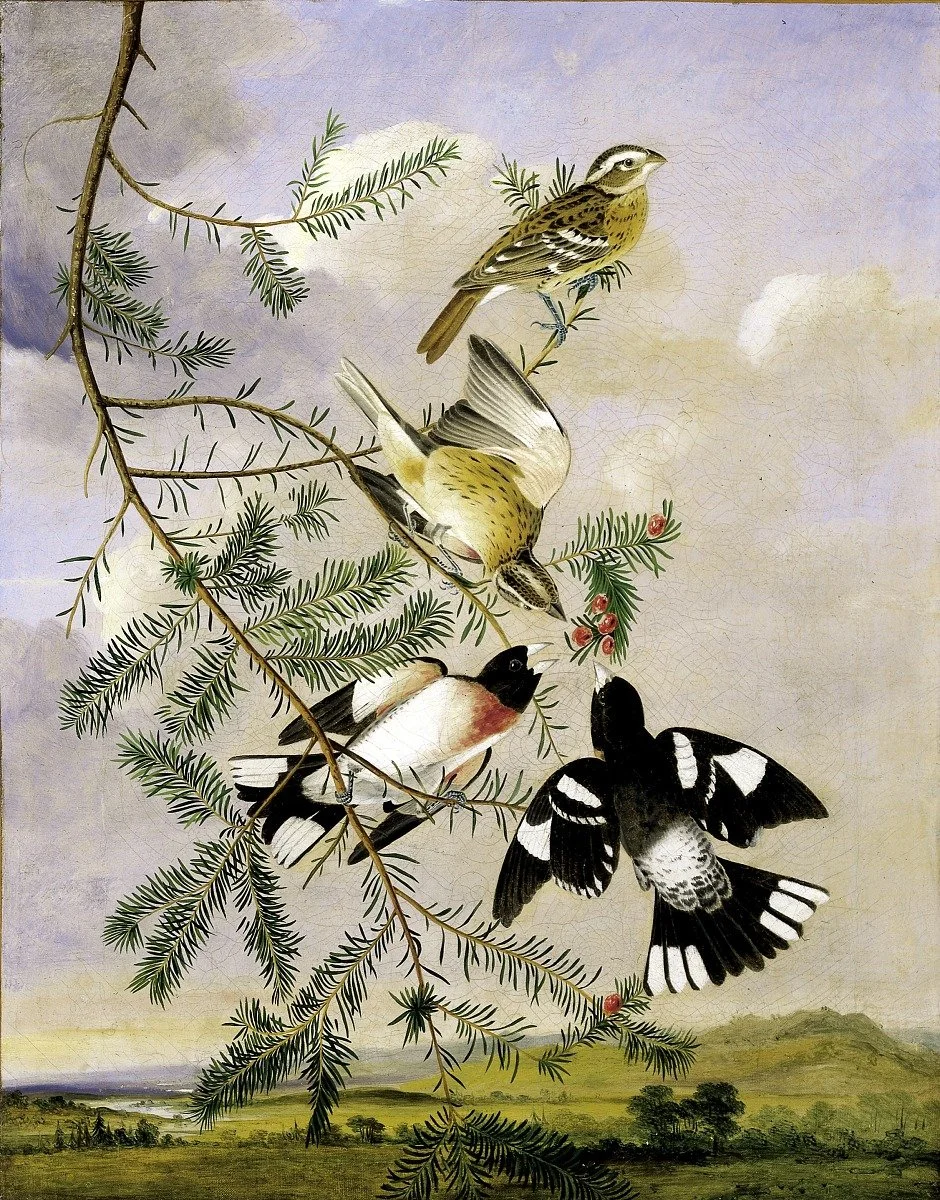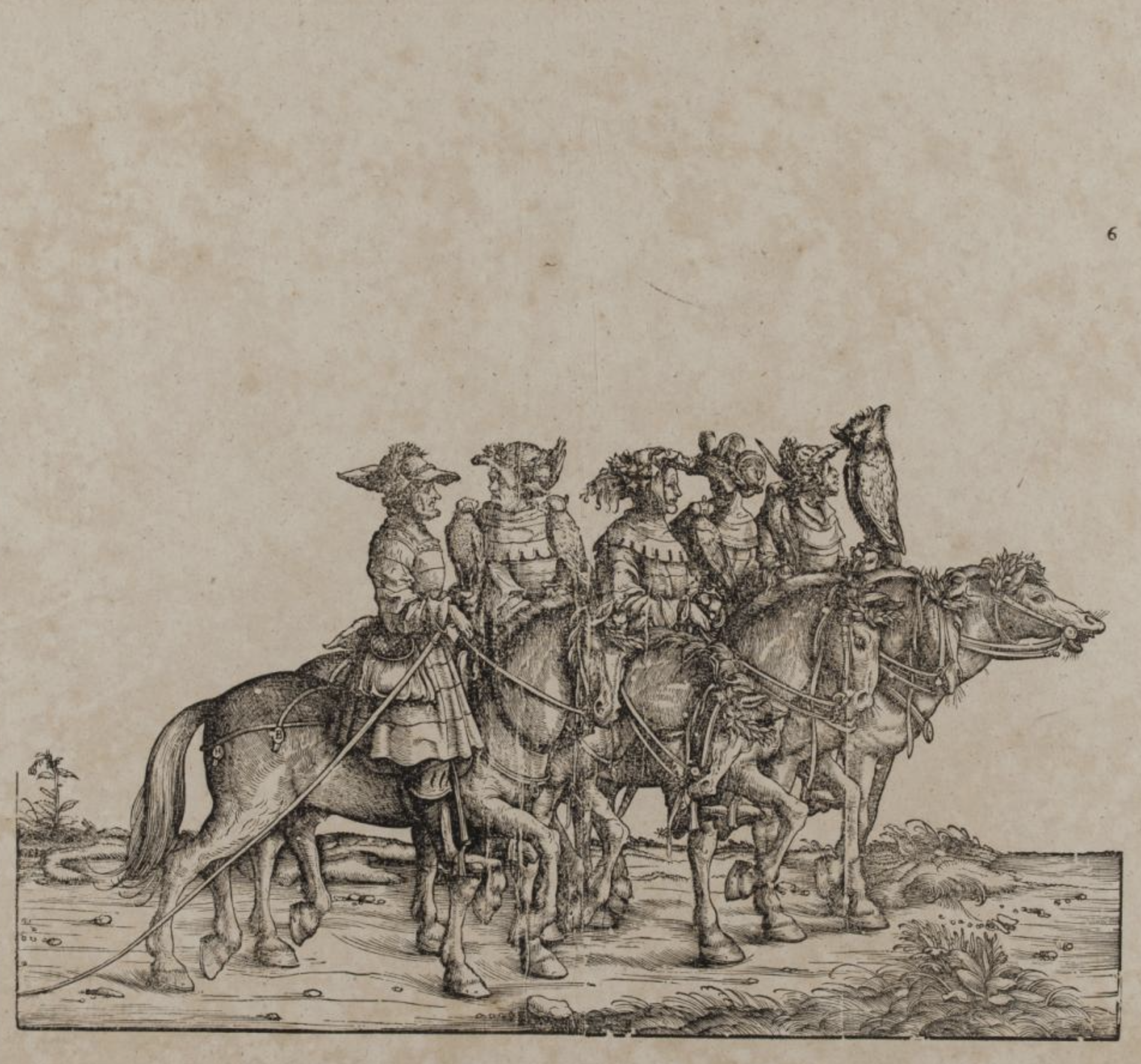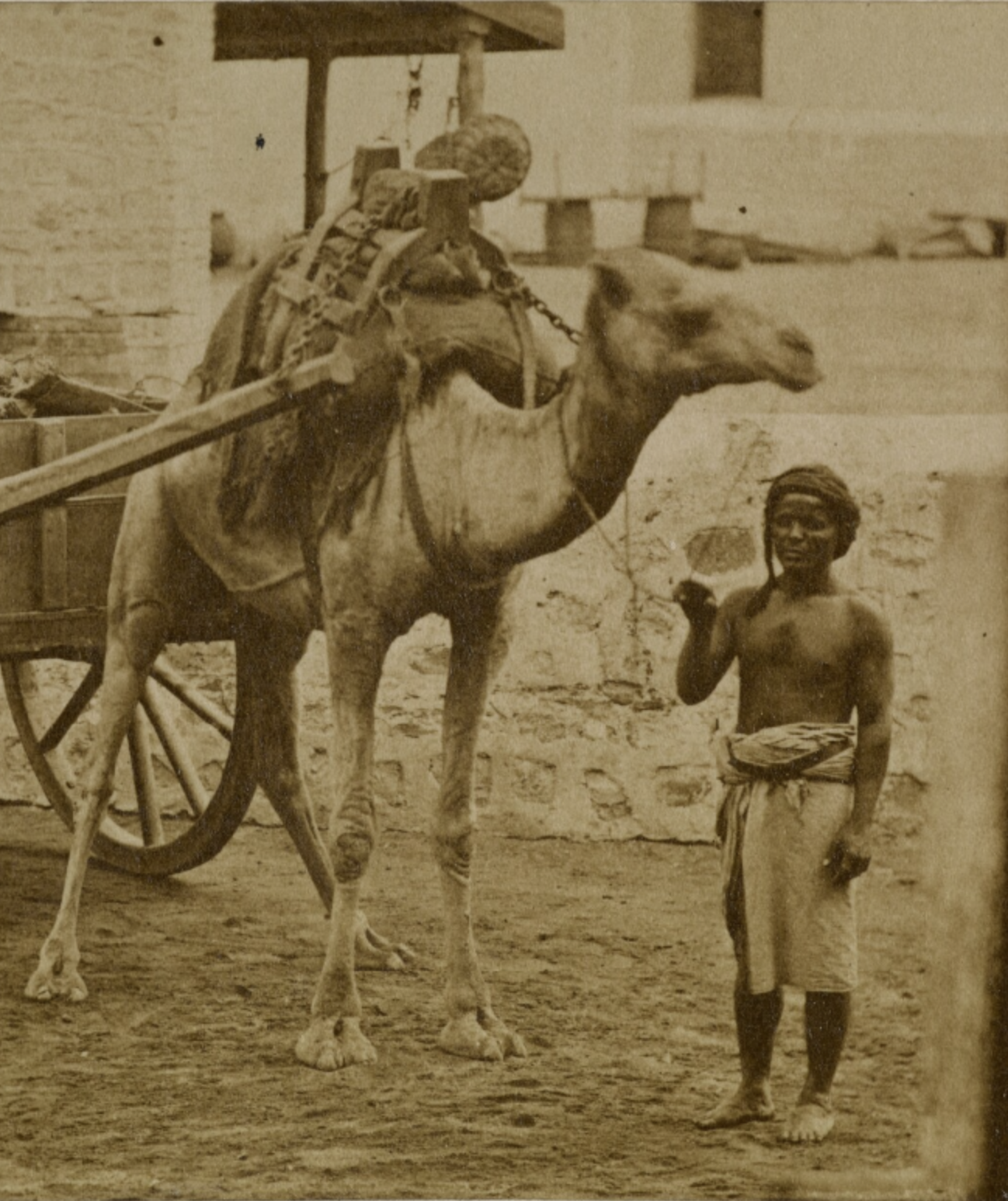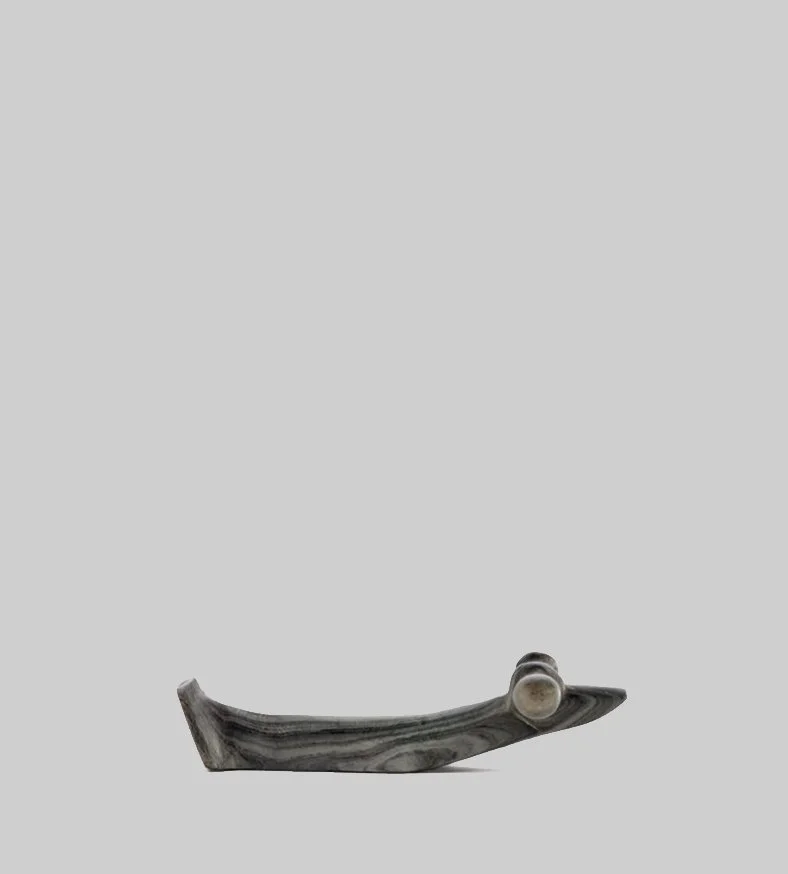StoryFrames
The Open Heritage Statement sets out shared values and principles for equitable access to heritage in the public domain and names key barriers that still limit that access in the digital environment.
StoryFrames spotlight the barriers addressed in the Statement and demonstrate, through real examples, not only how open heritage can help remove those barriers but also how it unlocks benefits across society. They show how open heritage is integral to ensuring our collective memory remains the foundation of our shared humanity.
Use the image links below to:
Understand the barriers: find out more about the barriers the Statement aims to address and connect them with real-world examples of best practices.
Discover success stories: see how institutions and communities have turned obstacles into opportunities through open heritage and understand the broader impact when barriers are removed.
Connect to the Statement: each StoryFrame links back to the Preamble and Articles it draws from, grounding these examples in the Statement’s values and calls to action.
We invite you to read and sign the Open Heritage Statement to signal your commitment and to join the dialogue with policymakers and stakeholders to promote equitable, open access to public domain heritage and address the barriers that stand in the way.
Links to StoryFrames
StoryFrame 1
New Copyright Wrongly Applied To Digitized Heritage
Some national laws grant, and some heritage institutions wrongly claim, copyright over faithful digital reproductions of public domain heritage, confusing the public and discouraging reuse.
WHAT’S POSSIBLE
In Poland, the digital library Polona shows that mass digitization does not have to mean new copyright restrictions. Since 2006, the National Library of Poland and partners have digitized millions of works—manuscripts, maps, photographs—and released them openly, affirming that faithful reproductions of public domain heritage remain in the public domain and free for any use. Today, Polona offers nearly four million items online and has even inspired creative tools such as Polona/Typo, launched in 2015 and still popular, which lets anyone build words and designs from centuries of digitized books, posters, and maps, making cultural heritage playful, visible, and part of everyday life.
By keeping heritage in the public domain, Polona encourages creative reuse, more vibrant research, and more participatory education. By aligning digitization with openness, Polona proves that safeguarding heritage can go hand-in-hand with empowering the public to share, remix, and build upon it.
WHY IT MATTERS
When national laws and institutions impose new copyrights on faithful reproductions, they undermine global commitments to keep digital heritage in the public domain, free of unreasonable restrictions.
Enabling equitable access is not merely technical; it is fundamental to preserving and promoting heritage. When creators, educators, or students cannot reuse public domain materials because of incorrect copyright claims, creativity stalls and our shared cultural legacy fades from memory. Maintaining the public domain in the digital environment strengthens legal certainty, fosters equitable access, and aligns preservation with the need to build inclusive, knowledge-based societies.
FROM THE OPEN HERITAGE STATEMENT
Preamble f: Recognize that various legal, contractual and technical mechanisms are presently used to limit access and reuse of heritage materials that are rightfully in the public domain.
Preamble g: Consider that copyright and related rights are sometimes granted or claimed in faithful reproductions (“non-original reproductions”) of public domain heritage.
Preamble q: Recognize that the lack of consistency and balance in copyright laws among countries, and lack of clarity on how to cooperate across borders, negatively affects efforts to preserve works, store them digitally, and give access to them.
Article 1: We agree that non-original materials resulting from an act of reproduction of public domain heritage should not be subject to new copyright or related rights.
Article 2: We agree that non-original materials resulting from an act of reproduction of heritage protected by copyright or related rights should pass into the public domain upon the expiration of those rights.
Article 3: We believe that no open licenses may be applied to public domain heritage in the absence of meeting legal requirements to support the application of that license.
“History of Selected American Plants” by Nikolaus Joseph von Jacquin (1780). Public Domain. National Library of Poland.
StoryFrame 2
Lack of Clear Marking for Public Domain Heritage
If digitized heritage in the public domain is not clearly identified as such, people will likely not know that they can freely reuse it. Lack of information is a barrier, and the solution is simple: clear tools that make heritage discoverable and clearly set out reuse possibilities.
WHAT’S POSSIBLE
Many institutions hesitate to fully open their public domain heritage collections. In 2013, Amsterdam's Rijksmuseum took the less-traveled path. Rather than digitizing masterworks like Rembrandts and Vermeers while controlling their use, this trendsetting museum released them freely. The result: designers wove Dutch masters into fabric patterns, teachers used high-resolution paintings in lessons, and artists remixed Old Masters into new works. By clearly marking works as public domain with CC legal tools and licenses, the Rijksmuseum made them easily discoverable and transformable, giving these artworks new life in imaginations worldwide.
WHY IT MATTERS
The Rijksmuseum shows what is possible, but across the globe, institutions are still sharing public domain collections without clear markers like CC0 or the Public Domain Mark (PDM). This creates a massive disconnect when materials are legally free to use, but appear locked away because they are not explicitly identified and communicated as “open.”
Digital heritage should be accessible through widely available and interoperable technologies and recognized open international standards.
Clear and trusted machine-readable tools are the bridge between legal openness and practical access. When public domain heritage is clearly marked as such, it can continue to live in the minds and hearts of communities, worldwide.
FROM THE OPEN HERITAGE STATEMENT
Preamble d: Note the important role that digital technologies play in promoting access to heritage.
Preamble f: Recognize that various legal, contractual and technical mechanisms are presently used to limit access and reuse of heritage materials that are rightfully in the public domain.
Preamble g: Consider that copyright and related rights are sometimes granted or claimed in faithful reproductions
(“non-original reproductions”) of public domain heritage.Article 3: We believe that no open licenses may be applied to public domain heritage in the absence of meeting legal requirements to support the application of that license.
Article 4: We agree that, where it is lawful and appropriate to do so, public domain heritage should be shared using standardized public domain tools that are preferably machine-readable.
"The Milkmaid" by Johannes Vermeer (1660). Public Domain Mark 1.0. Rijksmuseum.
StoryFrame 3
Onerous Attribution Requirements by Heritage Institutions
Sources matter. When public domain heritage is shared openly, the creator(s), community of origin, and the institution that hosts it generally deserve the courtesy of credit. Without clear reference, that connection can be lost.
WHAT’S POSSIBLE
Institutions that embrace open heritage do not impose licenses to be acknowledged. The McCord Stewart Museum in Montreal encourages attribution of public domain heritage and mention of the museum as a shared social norm, rather than a legal requirement. It makes its digitized heritage images openly reusable and provides clear, practical credit guidance, including sample statements to help users mention the provenance, credit the institution as the keeper of the object, and attribute authors.
Offering easy-to-copy credit statements, suggesting model attributions, and thanking users who include references all connect heritage back to its steward while keeping the public domain truly free. This simple approach keeps heritage visible, strengthens the museum’s role as steward, and ensures the public domain remains open for reuse. Creative Commons echoes this in its Nudging Users To Reference Institutions When Using Public Domain Materials guidance on good referencing practices.
WHY IT MATTERS
Acknowledging stewardship through clear credit builds trust, sustains support for open heritage, and demonstrates institutional impact. Without it, institutions risk erasure from the reuse chain and may turn to restrictive licensing, which undermines the freedoms of the public domain. As UNESCO makes clear, provenance and custodianship are vital to preserving cultural context. Proper acknowledgment ensures that heritage is not only legally open but also transparently connected to its sources, supporting authenticity and building bridges across the global community.
FROM THE OPEN HERITAGE STATEMENT
Preamble g: Consider that copyright and related rights are sometimes granted or claimed in faithful reproductions (“non-original reproductions”) of public domain heritage.
Article 3: We believe that no open licenses may be applied to public domain heritage in the absence of meeting legal requirements to support the application of that license.
Article 5: We emphasize that acknowledgment of the source is important and we support measures that improve the public’s ability to reference institutions, creators and communities of origin.
Photograph of "Tobogganing scene," painting by Cornelius Krieghoff, copied for Watson Art Gallery (1934-35). CC0 1.0. McCord Stewart Museum.
StoryFrame 4
Overreach of Moral Rights Restricting Heritage Access
Moral rights protect attribution and integrity, and in some countries, they never expire. Abuse of moral rights can unduly block adaptations and reuse of heritage that is in the public domain.
WHAT’S POSSIBLE
Apollo or Venus in your living room? That’s the proposition made by Denmark’s Statens Museum for Kunst (SMK) upon openly sharing its vast collection of 3D models of sculptures. With these open files, anyone can 3D-print a favorite sculpture and use it for study, research, or as decor. It is a vivid example of how SMK’s mission to make art available to all can come alive when openness is the core principle.
Heritage in the public domain belongs to the public, which means everyone can access, reuse, and breathe new life into it. At the same time, SMK cares deeply about the reputation of the artist when public domain heritage is modified. That is why SMK asks users not to credit the artist for any changes made or to use their name to validate a modified work.
SMK also requests users show respect for the original work: any changes made to the original must be clearly stated, so the honor and reputation of the artist are preserved. Their approach shows how respect for moral rights and creative reuse can coexist. Openness both protects creators’ dignity and fuels new knowledge, enriches cultural dialogue, and bolsters creative expression.
WHY IT MATTERS
Moral rights, such as rights of attribution and integrity, exist to protect an artist’s honor and reputation. But when they extend indefinitely and are misused to block copying, adaptation, or reinterpretation of works in the public domain, they can suppress freedom of expression, stall cultural growth, and prevent the development of new knowledge. Creativity flourishes through respectful exchange, not unfair barriers. For heritage to remain a foundation for education, innovation, and cultural vitality, the public domain must stay equitably open and reusable.
FROM THE OPEN HERITAGE STATEMENT
Preamble f: Recognize that various legal, contractual and technical mechanisms are presently used to limit access and reuse of heritage materials that are rightfully in the public domain.
Preamble g: Consider that copyright and related rights are sometimes granted or claimed in faithful reproductions (“non-original reproductions”) of public domain heritage.
Article 6: We believe that freedom of expression and the development of new knowledge and creativity should not be unreasonably limited by moral rights that may survive in public domain heritage.
"Niobide Chiaramonti" by Unknown. Public Domain Mark 1.0. Statens Museum for Kunst.
StoryFrame 5
Heritage Protection Laws Extending Copyright
Heritage in the public domain for centuries should be free to use. Yet, in some countries, laws give institutions control over digital reproductions even after copyright has expired, creating a “pseudo-copyright” that extends protection far beyond its legal term.
WHAT’S POSSIBLE
In Turin, Italy, the Museo Egizio—one of the world’s most important collections of ancient Egyptian art—has extended its mission of preservation into the digital environment. Through its Photographic Archive, the museum provides faithful digital reproductions of public domain heritage under a clear policy that allows any kind of reuse without permission or payment. The result is simple but powerful. Anyone can freely reuse these images without undue barriers. By treating digitization as an opportunity to expand access rather than restrict it, the Museo Egizio opens its treasures to new interpretations and cultural dialogue across borders.
WHY IT MATTERS
When cultural heritage protection laws overreach, they risk turning public-domain treasures into de facto proprietary assets, limiting freedom of expression and stalling cultural renewal. Lasting access must not be undermined by unnecessary restrictions: heritage that has entered the public domain should remain permanently accessible and reusable without hindrance. By adopting open standards and cooperative stewardship, institutions can ensure that cultural memory is preserved and shared across borders, enriching creativity, education, and cultural vitality for generations to come.
FROM THE OPEN HERITAGE STATEMENT
Preamble f: Recognize that various legal, contractual and technical mechanisms are presently used to limit access and reuse of heritage materials that are rightfully in the public domain.
Preamble h: Take into account that other laws may also require permission or the payment of a fee for certain uses of non-original reproductions of public domain heritage in publicly owned or funded collections.
Article 7: We encourage the removal of legal restrictions in national legislation that apply to heritage materials rightfully in the public domain.
"Statuette of Taweret" dedicated by draftsman Parahotep son of Pay (1292–1191 BCE) CC0 1.0. Museo Egizio.
StoryFrame 6
No Easy Way to Challenge Incorrect Copyright Claims
Copyright is sometimes claimed over digitized centuries-old medieval manuscripts, though these parchments are far beyond any protection period, if they were ever covered at all. The result is a tangle of contradictory claims that leaves the public unsure what they can use, with no real way to contest it.
WHAT’S POSSIBLE
Europeana, the portal to Europe’s digitized heritage collections, has shown how inaccurate rights claims can be surfaced and corrected. Its research found that more than a third of records carried inaccurate copyright statements, creating unnecessary restrictions. In response, Europeana introduced processes to improve accuracy, including rights audits, clearer labeling, and recommendations to “enable users to easily file errors related to rights statements.”
While few institutions yet provide a direct mechanism for the public to challenge copyright determinations, Europeana’s approach demonstrates the way forward: transparency about errors, active correction workflows, and user participation. By treating rights accuracy as a shared responsibility, cultural heritage institutions can reduce confusion, invite trust, and ensure that public domain heritage remains open.
WHY IT MATTERS
Without clear frameworks for confirming heritage’s public domain or in-copyright status, institutions can over-assert rights and keep heritage effectively locked away.
Access should not be undermined by unreasonable restrictions, and the public deserves transparent mechanisms to clarify a piece of heritage’s public domain status. As Europeana’s work shows, by empowering the public to assert whether heritage is in the public domain, heritage can be confidently reused worldwide.
FROM THE OPEN HERITAGE STATEMENT
Preamble f: Recognize that various legal, contractual and technical mechanisms are presently used to limit access and reuse of heritage materials that are rightfully in the public domain.
Preamble g: Consider that copyright and related rights are sometimes granted or claimed in faithful reproductions (“non-original reproductions”) of public domain heritage.
Preamble p: Take into account the absence of a clear and harmonized international legal framework governing digitization and access to public domain heritage.
Article 8: We support the introduction of legal means for members of the public to clarify the copyright status of materials that may rightfully belong in the public domain.
“Archive card with magazine clipping”, by Fritz Schlesinger (collector), representing "Christine de Pisan receiving Reason, Justice, and Rectitude" from “The Book of the City of Ladies," illustration by Anastasia Master of the City of Ladies (15th century), Public Domain Mark 1.0. Lette-Verein Archive .
StoryFrame 7
Contracts Undermining Heritage Access
Heritage in the public domain should be equitably accessible for everyone to use. Yet contracts, website terms of use, and usage agreements often impose new limits, declaring “non-commercial only” or “permission required.” These restrictions place unfair barriers around heritage and turn what should be shared resources into gated assets.
WHAT’S POSSIBLE
Instead of adding new restrictions, the Museum für Kunst und Gewerbe Hamburg (MKG) has chosen openness. In 2015, it launched the MKG Collection Online, becoming the first German art museum to make its digitized collections available for unrestricted reuse.
By releasing images of public domain heritage under CC0—without “non-commercial” clauses or hidden terms of use—MKG kept them free for study, research, creative projects, and even commercial use. This clarity gives scholars, educators, creators, writers, and creative entrepreneurs confidence to reuse the heritage, turning reuse into the foundation of its digital strategy rather than a point of control.
MKG’s example shows how institutions can replace uncertainty with clarity, proving that openness is not only possible but sustainable and beneficial for all.
WHY IT MATTERS
When contracts or terms of use are used to impose restrictions on reuse of public domain heritage, they do what copyright no longer does: they lock up heritage that should be free. To remain truly open, the public domain must be permanently accessible and reusable without hindrance. Clear, permissive policies remove unnecessary restrictions, build public trust, and strengthen the cultural ecosystem. By ensuring that heritage is not closed off by contractual barriers, institutions safeguard the conditions for creativity, education, and innovation to flourish.
FROM THE OPEN HERITAGE STATEMENT
Preamble f: Recognize that various legal, contractual and technical mechanisms are presently used to limit access and reuse of heritage materials that are rightfully in the public domain.
Preamble i: Stress that contracts or other arrangements may impose unnecessary restrictions on the use of
non-original reproductions of public domain heritage.Article 9: We believe that contracts should not be used to override the freedoms associated with the public domain.
"Clinique Chéron" by Théophile-Alexandre Steinlen (1905). Public Domain Mark 1.0. Museum für Kunst & Gewerbe Hamburg
StoryFrame 8
Technological Barriers to Heritage
Too often, public domain heritage is digitized only to be hidden again behind obstacles – low-resolution images, watermarks or blocked downloads. These technical locks create new walls around heritage that should be free, frustrating users and shrinking the cultural commons.
WHAT’S POSSIBLE
In Brazil, the Historical and Institutional Archive of the Museum of the Republic shows how technology can open doors rather than close them. Guided by its mission to protect and preserve national cultural heritage and to make its collections circulate and accessible to the public, the Archive makes its digitized heritage in the public domain freely available on its website with CC0—without any technological protection measures, encryption, password, or digital watermarking. This creates pathways for its vast collection of documents and photographs to be reused in classrooms, research projects, citizen cultural participation, or creative activities, proving how equitable access to heritage free of technical locks can strengthen cultural vitality and civic engagement.
WHY IT MATTERS
Open heritage is more than a legal concept; it includes technical elements as well. When collections are shared for reuse unencumbered by technological restrictions, heritage remains alive, discoverable, and adaptable. Conversely, technical blocks can keep significant portions of our shared digital heritage locked away. Around the world, many initiatives are demonstrating how reducing digital barriers expands who can discover, learn from, and reimagine heritage. Open heritage is not only about being copyright-free; it is about ensuring heritage is shared without digital locks.
FROM THE OPEN HERITAGE STATEMENT
Preamble d: Note the important role that digital technologies play in promoting access to heritage.
Preamble f: Recognize that various legal, contractual and technical mechanisms are presently used to limit access and reuse of heritage materials that are rightfully in the public domain.
Preamble j: Consider that restrictions such as digital rights management or technological protection measures may be unnecessarily imposed on non-original materials resulting from an act of reproduction of public domain heritage.
Article 10: We support providing access to public domain heritage free from technical restrictions.
“Pátria” by Pedro Paulo Bruno (1919). Public Domain Mark 1.0. Museu da República, via Google Arts & Culture.
StoryFrame 9
Heritage Inaccessible to People with Disabilities
If you cannot see it, hear it, or navigate it, how public is the public domain? Many digitized heritage materials exclude users with disabilities or neurodiverse needs. Barriers arise from the lack of alt text, captions, transcripts, screen-reader compatibility, flexible navigation, or the possibility to create versions adapted to their needs. Without these essentials, digital collections that are in the public domain remain inaccessible to people with disabilities.
WHAT’S POSSIBLE
The Te Whare o Rehua Sarjeant Gallery in New Zealand built accessibility into its digital collection from the start. Its online platform was designed and tested against WCAG 2.0 AA standards, ensuring screen-reader compatibility, clear navigation, and accessible multimedia. This commitment paid off. The gallery won the Digital Exhibition or Collection Award for creating an inclusive platform that opens heritage to all. By prioritizing accessibility from day one, the Sarjeant demonstrates that inclusion can be woven into design, not treated as an afterthought.
WHY IT MATTERS
Open heritage means heritage is accessible to people with disabilities. Without captions, alt text, transcripts, inclusive navigation, or the possibility to adapt heritage into new formats, digital collections lock out millions of people. True access means heritage is usable without hindrance by everyone, including blind and visually impaired users, deaf and hard-of-hearing communities, people with motor or cognitive impairments, and neurodiverse users, among others. Open heritage ensures that it is not only preserved and available in the digital environment but also genuinely accessible, enabling learning, creativity, and participation across all communities.
FROM THE OPEN HERITAGE STATEMENT
Preamble k: Emphasize that accessibility is sometimes overlooked during the digitization of public domain heritage, resulting in inaccessible formats and neglecting other essential accessibility requirements for persons with disabilities.
Article 11: We support the creation and sharing of accessible-format versions of public domain heritage for persons with disabilities.
"Boy with Noah's Ark" by Edith Collier (1917). Public Domain - No known copyright restrictions. Te Whare o Rehua Sarjeant Gallery.
StoryFrame 10
Lack of Skills Creates Gaps in Digital Access to Heritage
The future of heritage depends on how well we preserve, steward, and are able to access it. Yet many heritage practitioners still face challenges, lacking the knowledge, skills, training opportunities, tools, and expert support needed to openly share heritage in the digital world.
WHAT’S POSSIBLE
Open heritage requires specialized knowledge and skills, such as data management, software development, and copyright clearance and licensing knowledge. A lack thereof can frustratingly sound the death knell for many open heritage initiatives. This is one of the main motivations for the Creative Commons (CC) Open Culture Certificate, a 10-week course that develops the understanding of cultural heritage professionals on matters related to copyright and open licensing, as well as on how to harness the benefits of open heritage and navigate its challenges.
Available globally, the CC Certificate program equips heritage practitioners with the expertise to share and engage openly in the digital commons. Participants gain practical support to advance open access in their institutions, whether by shaping policies for digitization, developing funding mechanisms, or implementing sustainable practices. With a strong foundation in copyright, the public domain, and ethical considerations for digital collections, graduates leave the program empowered to expand equitable access to public domain heritage in digital spaces.
WHY IT MATTERS
Digitization is not a neutral act but a skill-dependent process shaped by cultural and ethical choices and legal constraints. Practitioners need the confidence to decide what to digitize, how to share it, and how to manage open access in ways that respect community values, meet local needs, and promote heritage as a shared resource. Strengthening these skills helps ensure that the digital transformation of heritage is inclusive and equitable. When heritage practitioners and bearers have the skills and tools to lead, the digital record better reflects the richness of all cultures, not just those with resources.
FROM THE OPEN HERITAGE STATEMENT
Preamble e: Recognize that the societal benefits of public domain heritage cannot be realized without the prerequisite first step of digitizing collections and the ability to connect and engage with heritage in the digital environment.
Preamble n: Also recognize that there is asymmetric investment in and access to digital technologies, data, and infrastructures, as well as gaps in human and institutional capacities contributing to a digital divide and geographic inequalities.
Article 12: We emphasize the importance of developing the skills of heritage practitioners to effectively and confidently address legal and technological challenges, including barriers related to preservation and accessibility.
Article 13: We encourage partnerships that foster openness, including for mutual capacity building and assistance, such as through knowledge exchange, training and equipment sharing.
“Rose-Breasted Grosbeak” by Joseph Bartholomew Kidd, CC0 1.0, Smithsonian American Art Museum.
StoryFrame 11
High Cost of Access to Public Domain Heritage
Public funds already pay for much of heritage digitization, yet the public is often charged again to access it. Licensing fees, subscriptions, and per-download costs create a double payment that turns a public good into a commodity.
WHAT’S POSSIBLE
Paris Musées showed how public collections can stay truly public. Since 2020, the network of 14 municipal museums has made nearly 400,000 high-resolution images of artworks freely available for download. There are no fees for access, download, or any kind of reuse. Instead, the museums invite users to explore, share, and repurpose their collections at no cost to the user. By removing financial barriers, Paris Musées has enabled new educational resources, artistic projects, and broader public engagement with the City of Light’s heritage.
WHY IT MATTERS
This model shows that public institutions can meet preservation and access needs without putting public domain heritage behind a paywall. Too often, institutions offset digitization expenses through licensing fees or exclusive commercial deals, charging the public twice for works it already owns collectively. Paris Musées demonstrates that when access to the public domain is truly free in the digital environment, the benefits flow to everyone, strengthening education, creativity, and cultural participation. Protecting this principle ensures that what is legally public remains publicly accessible without undue costs, while allowing institutions to focus resources on their core mission: preserving and sharing heritage into the future.
FROM THE OPEN HERITAGE STATEMENT
Preamble m: Are aware that the infrastructure necessary to make public domain heritage available requires significant resources.
Article 14: We acknowledge the need for economic models that allow for the recovery of legitimate and reasonable costs incurred by institutions in the course of digitization and collections management without unduly restricting access to public domain heritage.
"The Triumph of Emperor Maximilian I: Sixth Plate, The Falconers" by Hans Burgkmair (1512-1519) CC0 1.0. Petit Palais, musée des Beaux-arts de la Ville de Paris.
StoryFrame 12
Fragile Infrastructure for Open Heritage
We are sharing digital heritage on fragile, ephemeral structures. Without resilient, lasting infrastructure, today’s treasures risk becoming tomorrow’s broken links.
WHAT’S POSSIBLE
In 2014, Qatar National Library created the Qatar Digital Library, a free-to-use and reuse archive covering modern history and culture of the Gulf and wider region. From the start, it built on the International Image Interoperability Framework (IIIF), a set of global open standards for sharing digital objects. This enables deep zoom, side-by-side comparisons, annotations, and searchable text in both Arabic and English. This open, bilingual design made rare manuscripts, maps, and photographs accessible in extraordinary detail to scholars and the public worldwide.
WHY IT MATTERS
Many institutions still rely on fragile, proprietary, or underfunded systems to store and share digitized heritage. Without open standards, consistent metadata, and robust public infrastructure, collections become siloed, poorly preserved, and at risk of disappearing because of digital obsolescence or decay.
Qatar National Library’s approach shows what’s possible when infrastructure is built for the long term: it safeguards our world’s memory, ensures equitable access across languages and regions, and supports reuse on a global scale. Sustainable, open infrastructure is not just a technical choice; it is a commitment to keeping heritage alive, discoverable, and interoperable for generations to come.
FROM THE OPEN HERITAGE STATEMENT
Preamble l: Further acknowledge that the lack of standardized preservation practices and the absence of uniformity in metadata standards hinder the public’s ability to benefit from digital heritage.
Preamble m: Are aware that the infrastructure necessary to make public domain heritage available requires significant resources.
Preamble n: Also recognize that there is asymmetric investment in and access to digital technologies, data, and infrastructures, as well as gaps in human and institutional capacities contributing to a digital divide and geographic inequalities.
Article 15: We believe in developing and maintaining open and sustainable digital public infrastructures which use robust preservation and access practices, protocols and standards, to ensure that digital heritage and metadata are accessible to enhance reuse and foster collaborative networks globally.
"Aden Municipal Rubbish-Cart" by Unknown, (ca. 1870), Public Domain Mark 1.0. British Library: India Office Records and Private Papers, T.11308/10, in Qatar Digital Library.
StoryFrame 13
Tension Between Copyright and Indigenous Data Governance Frameworks
What is public through one lens is not necessarily through another. Copyright sometimes fails to address the collective cultural significance of Indigenous heritage. Without free, prior, and informed consent, sharing of Indigenous heritage can repeat colonial patterns of dispossession, misrepresentation, and cultural appropriation.
WHAT’S POSSIBLE
The Indianapolis Museum of Art at Newfields has become a recognized leader in collection stewardship through its partnership with Local Contexts (LC). LC is a global initiative that supports Indigenous communities with tools to reassert cultural authority in heritage collections and data.
When the Indianapolis Museum of Art began reviewing Indigenous items in its collections, it realized that simply digitizing and sharing them online, without understanding the stories, protocols, and permissions behind each piece, could be harmful and disrespectful. Through dialogue with heritage-bearing communities, the museum now applies LC’s Traditional Knowledge (TK) Labels, which embed community-specific protocols and permissions directly into digital records.
WHY IT MATTERS
Where various governance systems apply to access and use of heritage, such as customary laws and protocols, participation and agency must be centered. This often applies to secret, sacred, spiritual, or culturally sensitive heritage (human remains, funerary objects, and ceremonial items). It also concerns objects acquired in the context of colonization, belonging to cultures of marginalized, underserved, or underrepresented communities, or items that bring about specific and complex issues beyond the “in copyright vs. public domain” binary. Legitimate reasons exist not to share heritage openly, for example, when doing so would exacerbate inequity or inequality, cause harm, or lead to the exploitation of the people identifying with such heritage.
The Indianapolis Museum of Art’s approach shows that open heritage extends beyond copyright. It honors living cultures, centers Indigenous peoples and communities of origin, and embeds data sovereignty into digital systems. TK Labels signal that what may be “public domain” under copyright may still carry deep cultural meaning and restrictions. This model shows that stewardship in the digital environment begins with relationships and respect for communities of origin.
FROM THE OPEN HERITAGE STATEMENT
Preamble t: Note that the intellectual property system is one system among many legal, cultural, and technological systems governing access to heritage.
Preamble u: Respect the rights, interests, protocols, practices, customs and traditions as recognized by international and community governance frameworks.
Preamble v: Recognize the importance of safeguarding privacy and ensuring robust data protection, data sovereignty and self-determination.
Article 16: We acknowledge the need to transparently engage with, consult and involve communities of origin to enable free, prior and informed consent in decision-making processes involving both physical and digital heritage.
Article 17: We recognize that there may be legitimate reasons not to digitize, allow access or openly share heritage, particularly where additional governance systems may apply.
"birdstone" by Unknown, (1500 B.C.E. - 500 C.E.) Public Domain (No Copyright - United States Rights Statement). Attribution Incomplete Notice, Traditional Knowledge Notice, Open to Collaborate Notice. Indianapolis Museum of Art at Newfields.
